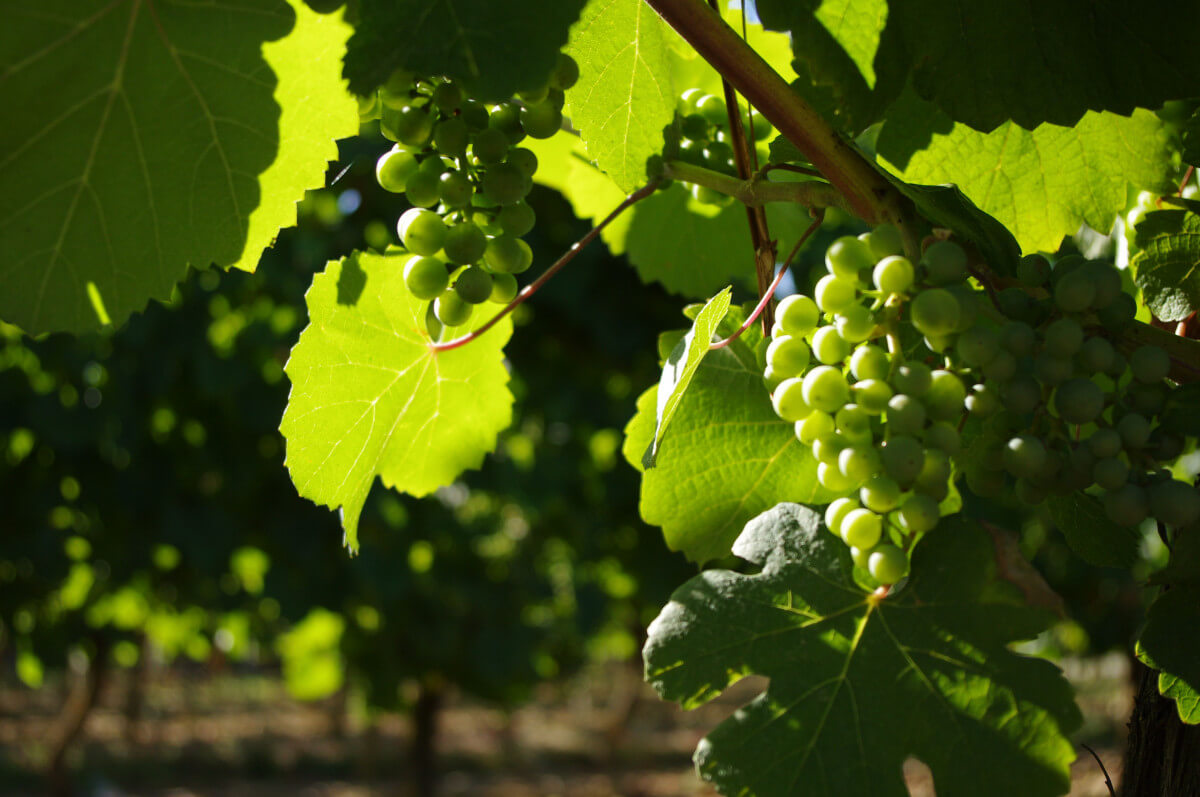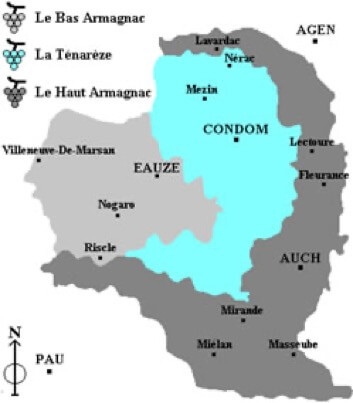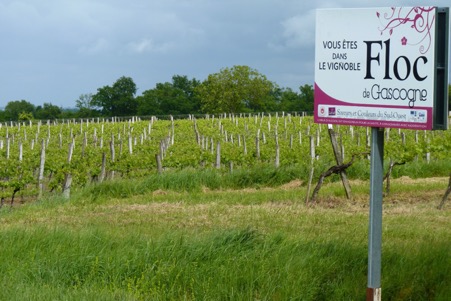by adminrif on 20-01-2021 in Articles1

Gascony Wines Part Two: A Visitor’s Guide
Gascony Food & Drink
January 18th, 2021 5 minute read
Gascony in South West France has been an important wine making area for 2000 years, since the Romans planted the first vines following their conquest of this part of Gaul. For hundreds of years wine, and later Armagnac production, has steadily increased. Building on this tradition, Gascon winemakers (in French: ‘vignerons’, and ‘vigneronnes’) today produce a wide variety of good value wines. This article will tell you more about the different wine areas and grape varieties used in Gascony, and then explain the mysterious concept of ‘Terroir’. The next article in this series will introduce you to some of the wines and winemakers we know…
Wine Areas
The three main grape growing areas in Gascony are based on the historic production areas of Armagnac: Bas-Armagnac to the west is the largest area with vines grown on clay and sand soil, Ténarèze, in the centre and north, where the soil is limestone and grapes produce aromatic and rich wines, and Haut-Armagnac, to the east and south, where the soil is made up of clay limestone and gravel soil, and the wines are more delicate. These areas are all to the West of Auch and now grouped under the general wine-producing region “IGP Cotes de Gascogne” (‘CdG’). There are several smaller AOC production areas within or on the edge of the IGP, such as Pacherenc, Madiran and Saint Mont.

Grape Varieties
One of the special kills of Gascon winemakers is the ability to combine well-known ‘international’ grape varieties with the relatively unknown local varieties, in a way that adds ‘something different’ to Gascony wines. Examples are:
White
Sauvignon Blanc or Chardonnay with the Gascon varieties Colombard or Gros Manseng. For example, Sainsbury’s supermarkets import a Sauvignon Bland/Colombard blend made by the excellent and innovative Plaimont wine-making cooperative in Saint Mont. One of the Prince of Wales’s selected white wines is the ‘Highgrove Cotes de Gascogne’ which is a blend of three Gascon varieties Colombard, Ugni Blanc and Gros Manseng.
Red
Cabernet Sauvignon or Merlot with Gascon varieties Tannat or Fer Servadou/Pinenc. Waitrose imports Chateau Aydie, a Tannat blend from Madiran. The Plaimont Cooperative of St Mont produces good ‘single estate’ red Le Faite Rouge made from Cabernet Sauvignon, Tannat and Pinenc, which is imported by Corney & Barrow.
As a summer visitor to Gascony, you will probably enjoy these local hot-weather favourites:
Other Gascon Drinks

Floc de Gascogne. (see above) An Armagnac-based aperitif/digestif, made by mixing one-third base (unoaked) Armagnac spirit with two-thirds unfermented grape juice from the same property. Usually served chilled, this 17% drink dating from the 16th century is also used in traditional Gascon puddings.
Gascon Rosé wine. This is typically rather fruitier and a darker colour than the better-known Provence wines. Everyone has their favourite! Our personal ‘house wine’ is called Les Trois Domaines, produced by a family-owned winery near Fleurance.
Pousse Rapiere (see below).An Armagnac-based liqueur, drunk as an ‘apero’ or more frequently served as a cocktail, mixed 1:6 with Gascony’s answer to champagne, the traditional ‘Vin Sauvage’ – both produced by Chateau Monluc. (Pousse Rapiere means a ‘Rapier Thrust’).

Terroir
The French word ‘Terroir’ is used to sum up a variety of the critical elements (apart from the winemaker/vigneron) that combine to make each wine the unique product that it is. These elements are associated with the place where the grapes are grown and, perhaps, the wine is made. ‘Terroir’ is the foundation of a vineyard and the performance of the different grape varieties mentioned above can vary according to the ‘Terroir’. These elements are:
Climate - both regional and local; average temperatures, daylight hours, rainfall; night-time temperatures are increasingly understood to be important at harvest time.
Soil - geology, mineral content, quality, depth, drainage; it is said that the poorer the soil, the better the wine!
Terrain - aspect, altitude, angle of slope, local geography, water sources; vines are often planted on south-east facing slopes to maximise exposure to daylight.
History – the way wine has traditionally been made in an area or at a property will relate to the other three elements above and also affect the techniques and equipment used today.
Winemakers
The above variables are then guided by the person or people who manage the vineyard (viticulture – a specialised form of agriculture) and the winery (vinification – a mixture of science and magic) and everything is dependent on the weather! In the third part of this series we will move on to look at individual properties and winemakers in Gascony.
Why not try Gascon wines for yourself?
One of our Simply Gascony properties, Chateau Pélat, has its own vineyard which produces a characteristically powerful Gascon red wine, ideal for drinking with red meats and cheeses. When you rent Chateau Pélat you will be given a dozen bottles of Pélat 2017 Red as your ‘coming to stay’ present! Go to: Chateau Pelat.

Book a holiday to remember with Simply Gascony:





